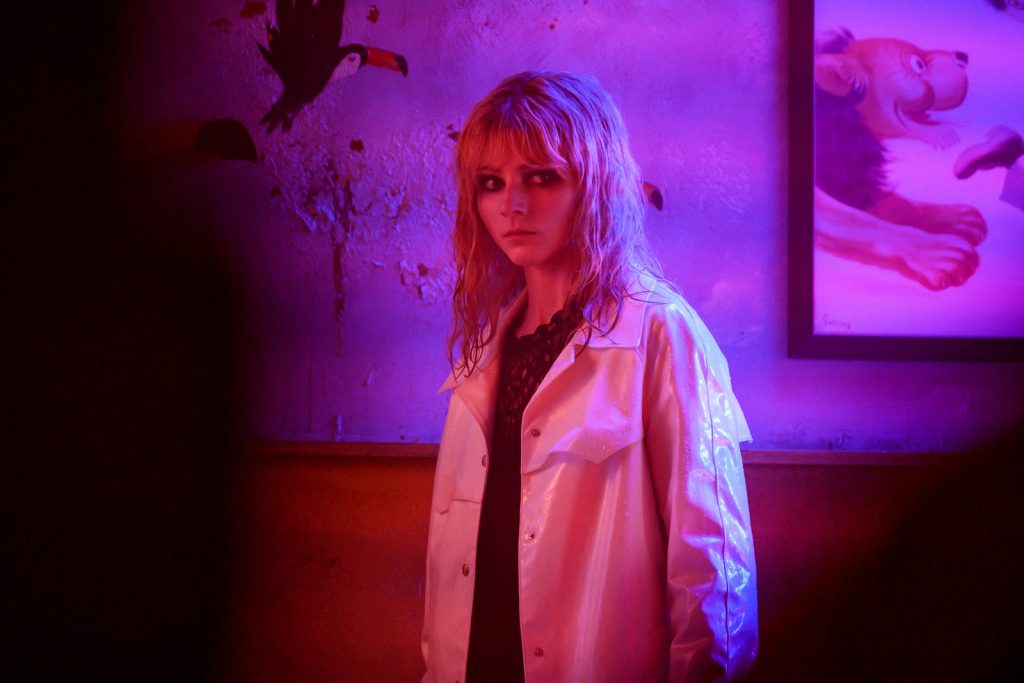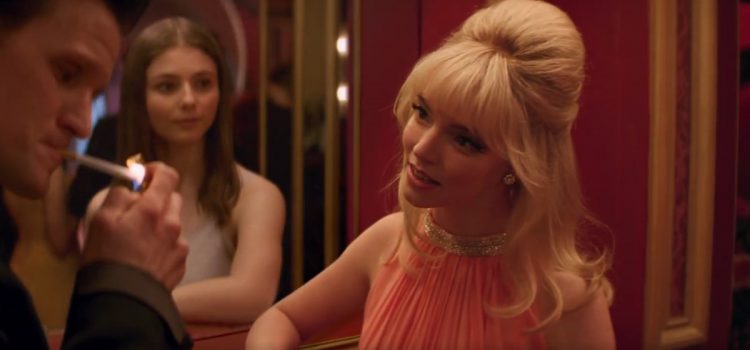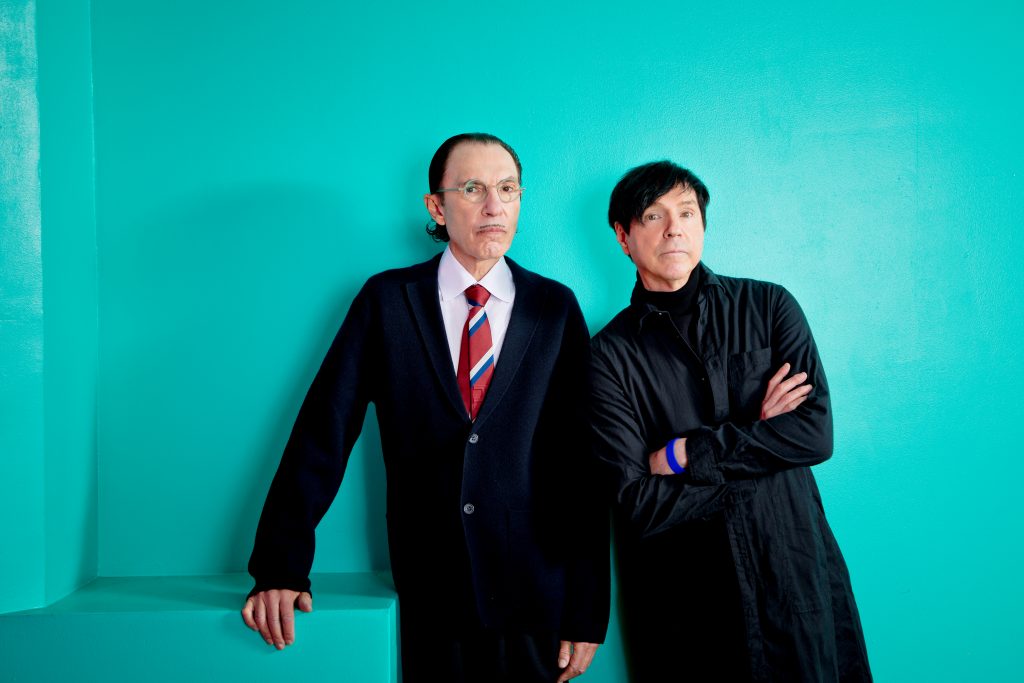By Alex McPherson
A lusciously stylish descent into nostalgic madness, director Edgar Wright’s new film, “Last Night in Soho,” can’t match its technical brilliance with satisfying storytelling.
The film follows Eloise (Thomasin McKenzie), a naive soul obsessed with the 1960’s who leaves her rural village to study at the London School of Fashion. She’s haunted by ghostly apparitions, including her mother, a fashion designer who died when Eloise was seven.
Out of a desire to make it big and follow in her mother’s footsteps, Eloise arrives in the big city, unprepared for what she’ll find — social alienation. Her roommate, mean girl Jocasta (Synnove Karlsen), and others judge her for her supposedly antiquated interests, while pervy men casually harass her. To get away, Eloise rents a West London apartment maintained by a wryly funny landlady (the late Diana Rigg, giving a glorious performance in her final role). The room Eloise rents — bathed in flashing red and blue neon light — seems pleasant enough, if a bit creepy.
One night in her slumber, Eloise is transported back to the 60’s to live in the shoes of Sandie (Anya Taylor Joy), an up-and-coming singer who wants to become the next Cilla Black. An embodiment of the sort of confident, ambitious woman that Eloise hopes to become one day — and a chanteuse able to sing a killer rendition of “Downtown” — Eloise quickly becomes infatuated with her. However, darker truths are revealed when Sandie gets involved with an alluring, slimy bugger named Jack (Matt Smith) who promises to make her a star. Sandie’s traumatic experiences start bleeding into Eloise’s present as increasingly morbid visions impact her waking life.
This storyline represents an interesting deviation from Wright’s male-driven comedy background. Unfortunately, “Last Night in Soho” feels jumbled, with a spellbinding first half that devolves into clichés by the conclusion. Still, the film is invigorating thanks to its deft craftsmanship and wholehearted performances from the entire cast, McKenzie and Taylor-Joy especially.
Indeed, Eloise is a sympathetic protagonist, a youthful fish-out-of-water struggling to fit in. McKenzie’s acting lends her an innocent vulnerability, making her rapid infatuation with Sandie somewhat believable, and her later descent into paranoia all the more disturbing. The last third requires McKenzie to be in constant panic mode, yet she keeps emotions grounded when the script proceeds in absurd directions.
Eloise’s initial time-traveling visions are utterly fantastic — throwing her (and viewers) into a decadent world of glitz and glamour that blocks out the darkness lurking beneath the flashiness, featuring the pervasive pop culture references that Wright specializes in. With shimmy-worthy tunes blaring in the background, these sequences are a pure joy, most notably a hypnotic dance sequence involving Taylor-Joy and McKenzie being swapped back-and-forth mid twirl.
“Last Night in Soho” shines in these instances, where Eloise and Sandie are experiencing the euphoric bliss of realizing their dreams with sky-high hopes for the future. This idea of escaping into an idealistic version of the past is, in fact, a key theme in “Last Night in Soho.” Eloise gradually sees the cracks in the facade, observing how the sexism of the time continues to infest the London of today, rendering her deeply traumatized.
Although Wright and co-writer Krysty Wilson-Cairns aren’t able to massage this concept into something truly impactful, Wright deploys nearly every cinematic tool at his disposal to catch viewers off-guard in the grim second half, in which the film shifts from a coming-of-age tale to a mystery to outright horror. Combining giallo-inflected, fever-dream lighting and camera movements with a soundscape mixing together classic tunes and foreboding ambiance with whispers of dialogue, “Last Night in Soho” depicts Eloise’s mental turmoil with immersive aplomb.
However, this jack-of-all-trades approach sacrifices the dramatic pull that could have elevated it to another level. Firstly, we don’t get to spend enough time with Sandie for her to feel like a fully developed character. Taylor-Joy brings a confident energy to her performance that’s always entertaining to watch, but Sandie is kept frustratingly distanced from viewers throughout. We only witness snippets from the highs and lows of Sandie’s burgeoning career, eschewing nuance to keep the story moving forward at an overly brisk pace.
Additionally, when the horror arrives, “Last Night in Soho” has predictable jump scares and generic-looking baddies. It also lacks much of the clever self-awareness that helped make Wright’s other films so successful. Moments of dark comedy are certainly here — Terence Stamp chews scenery to a pulp as a sketchy creep who would fit in well among the “Greater Good” crowd — but “Last Night in Soho” takes itself quite seriously, even in its ludicrous finale, in which Sandie takes center-stage and Eloise’s arc is left frustratingly streamlined.
Along with a token Black character willing to risk his life for Eloise despite barely knowing her and an unnecessary slasher detour in the climax, the film becomes ever-more trippy, losing sight of the real societal issues that Wright and Wilson-Cairns obviously care so much about.
“Last Night in Soho” is easy to get lost in. When you peel back the curtain, though, it’s a cinematic ride built on a rickety foundation.

“The Last Night in Soho” is a 2021 psychological mystery-thriller directed by Edgar Wright and starring Thomasin McKenzie, Anya Taylor-Joy, Diana Rigg, Terence Stamp, Matt Smith. Its run time is 1 hour, 56 minutes, and it is rated R for bloody violence, sexual content, language, brief drug material and brief graphic nudity. It opened in theatres Oct. 29. Alex’s Grade: B.
Alex McPherson is an unabashed pop culture nerd and a member of the St. Louis Film Critics Association.



